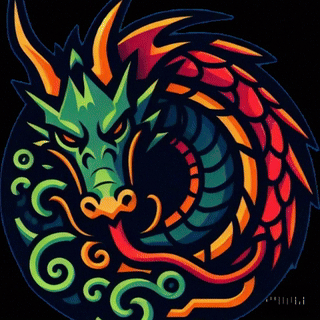Oh yeah, let's turn the page and step into the wild, fierce, and fascinating world of divine duality. Because next up, we’ve got two goddesses in one—a perfect blend of comfort and chaos, of gentle purrs and explosive roars. Welcome to the mystery of Bastet and Sekhmet.
Part 9: Bastet and Sekhmet – Dual Faces of the Divine Feminine
Imagine a goddess who can curl up in your lap like a sweet housecat... and then, the next moment, transform into a lioness that could tear through armies without blinking. That’s the energy we’re stepping into. These two—Bastet and Sekhmet—are often seen as opposites, but in truth, they’re two sides of the same divine force.
They represent the divine feminine in all its complexity—nurturing and fierce, protective and destructive, soft and strong. And honestly, they’re some of the most fascinating goddesses in Egyptian mythology.
Bastet – The Gentle Guardian
Let’s start with Bastet.
She’s often depicted as a woman with the head of a cat, or sometimes just a sleek black cat sitting elegantly, looking like she owns the place (because she probably does). Her energy is cozy, comforting, sensual. She’s the goddess of home, fertility, music, love, protection, and of course—cats.
Bastet was the divine protector of households, especially women and children. She brought peace, joy, and warmth into people’s lives. Think of her as the goddess you’d light incense for when you wanted harmony in the home, or to keep your loved ones safe during childbirth or travel.
Her festivals were legendary—lively, joyful, and kind of wild. Every year, people would sail to her sacred city of Bubastis for a massive celebration. They'd dance, drink wine, play music, and just let loose under the protection of the goddess. Picture ancient Egypt’s version of Mardi Gras... but with more incense and cat statues.
Bastet wasn’t just about being cute and cuddly, though. She was also a protector, especially from evil spirits and disease. Cats were sacred because they killed vermin and snakes, keeping homes safe—and Bastet, the ultimate cosmic cat, did the same on a spiritual level.
But here’s where it gets interesting...
Sekhmet – The Lioness Unleashed
Flip the coin, and you get Sekhmet—the lion-headed goddess of war, plague, rage, and unmatched divine wrath.
Where Bastet purrs, Sekhmet roars.
She’s the sun’s scorching fire, the desert’s unforgiving heat, and the battlefield’s chaos. Born from the Eye of Ra—his fury made flesh—Sekhmet was sent to punish humanity when they turned against the gods.
And punish she did.
In one of the most intense myths, Ra sends Sekhmet down to earth to wipe out humans who had become arrogant and disrespectful. She becomes a literal bloodthirsty force of destruction, tearing through villages, unstoppable. The land runs red with blood.
Eventually, Ra realizes things have gone too far. If she keeps going, there won’t be anyone left to worship him. So, he tricks her—he dyes beer to look like blood, pours it all over the ground, and when Sekhmet drinks it, thinking it’s more carnage, she gets drunk and passes out.
When she wakes up, her rage is gone. She calms, her fury cooled, and that fiery lioness retreats. Some say this is when she becomes Bastet—the peaceful cat after the lion's storm.
So... were they the same goddess? In many ways, yes.
Two Names, One Soul
Bastet and Sekhmet are like fire and flame. Same element, different form. They represent the full spectrum of femininity—not just the sweet and nurturing, but the powerful and wild.
Think about it: women in ancient Egypt weren’t seen as passive or weak. They were mothers and warriors. Lovers and rulers. Creators and destroyers. These two goddesses wrapped all that energy into divine form.
Bastet ruled over the North, protecting cities like Bubastis, while Sekhmet ruled the South, especially in Memphis, where she was known as the fierce defender of the pharaoh. Soldiers would pray to her before battle, asking for her strength and ferocity.
Priests of Sekhmet were powerful healers too—because who better to cure disease than the one who can cause it? Her name means “The Powerful One,” and she was seen as a necessary force—destruction that clears the way for healing.
The Feminine Force in Full Power
Together, Bastet and Sekhmet are a reminder that feminine power isn’t one-dimensional. It’s not just love and beauty—it’s strength, fury, grace, and fire, all rolled into one.
In modern terms, Bastet is the warm, grounding energy of a friend who makes you tea when you’re down, while Sekhmet is the ride-or-die who’ll burn everything down if someone hurts you.
And don’t we all need both, depending on the day?
Cat Energy Forever
To this day, cats are still kind of mystical in Egypt. Bastet’s influence lingers in the way people admire a cat’s independence, mystery, and elegance. And Sekhmet’s spirit can still be felt in every fierce woman, every righteous rage, every roar that demands justice.
Together, they show us that divine energy is never just one thing. It's layered. It's complex. It's human.
Next up: Part 10: Ma’at – The Feather of Truth, where we explore the goddess who held the entire world in balance, not with force, but with one simple, weightless symbol: a feather. Ready to step into the essence of truth itself? 🪶✨
480-366-3550 (Domain Sales)
© SDBEST LLC, 2025. All rights reserved.
Sponsorship Disclosure
Terms of Service
